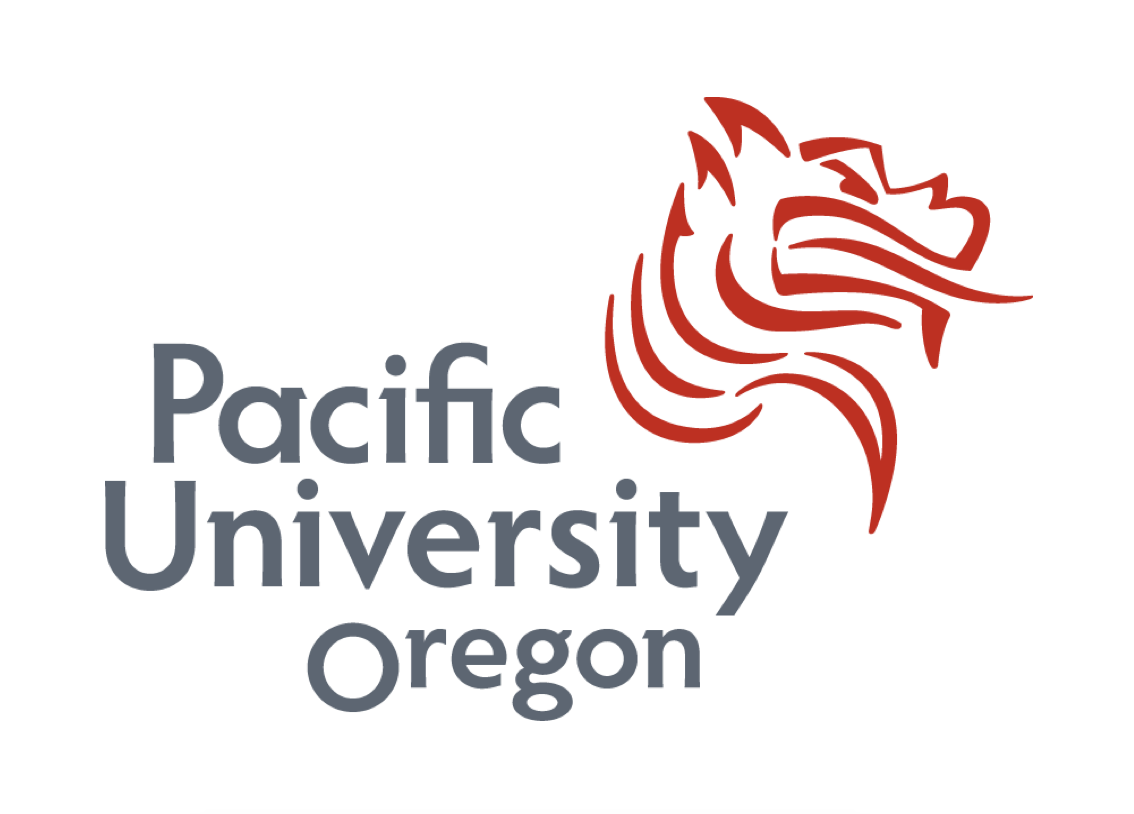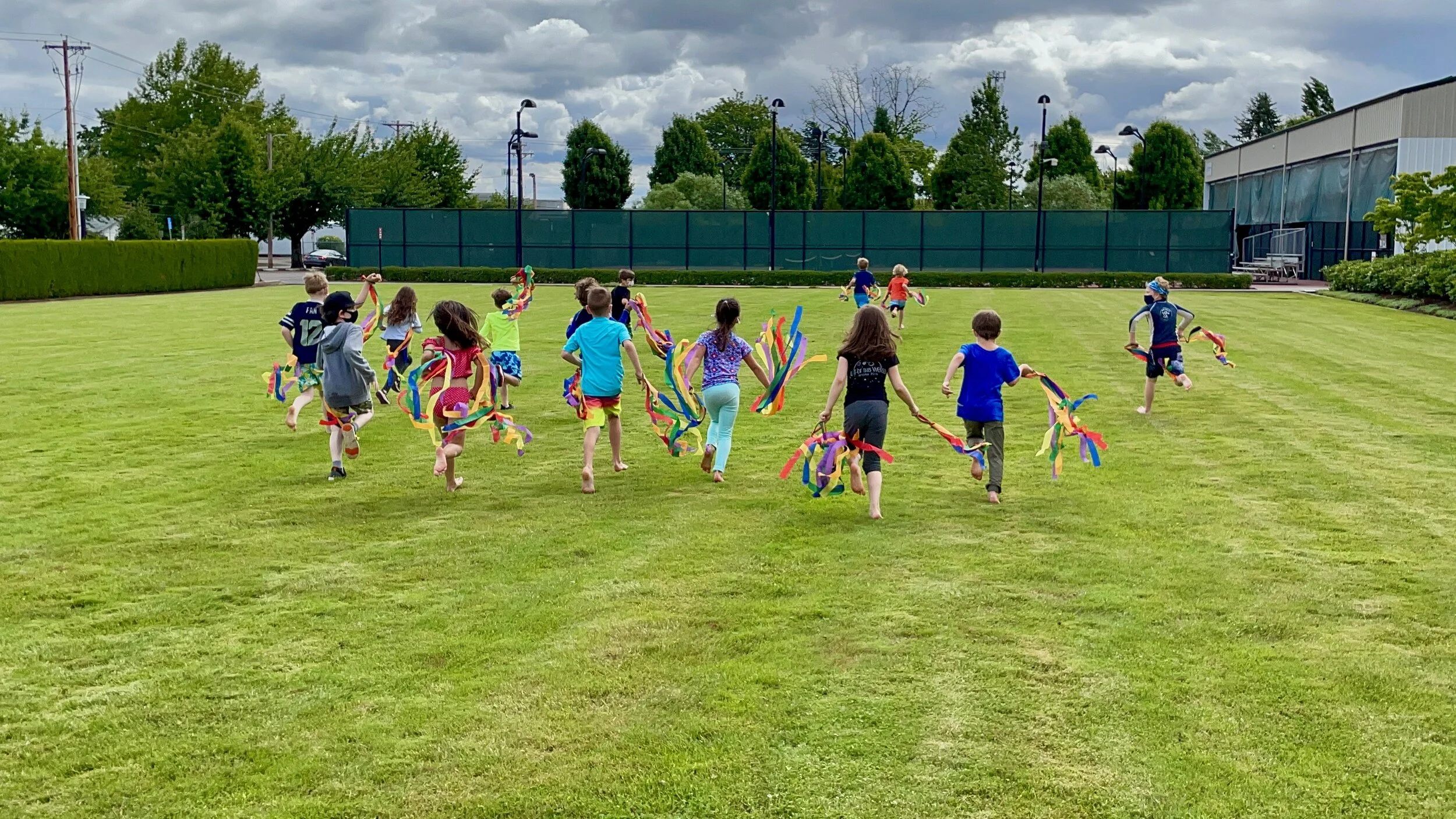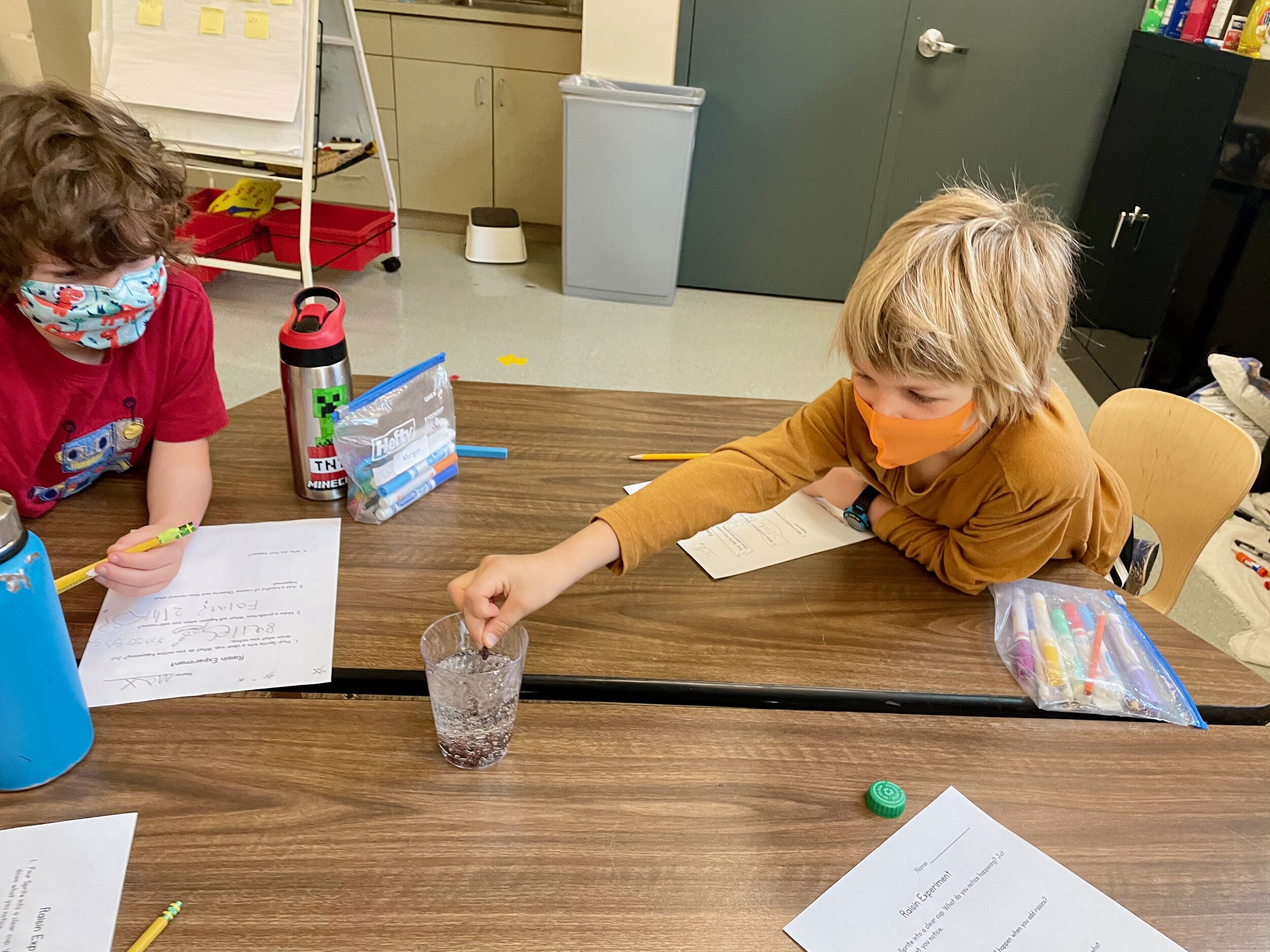Chemistry Unit
/Last Thursday we got to attend a science demonstration put on by Pacific’s Chemistry Club. We learned about acids and bases and got to watch a chemical reaction that created big, foamy elephant toothpaste. This demonstration inspired many questions and observations from our Otters. They wanted to learn more, so we decided to start a unit that would allow students to explore their questions about matter, states of matter, and chemistry. Students began by writing down the questions they had. Then we started researching by reading a book called What Is the World Made Of? We went around the school on a search for different solids, liquids, and gases. We added our findings to our anchor charts. Then we did an experiment with Sprite. We noticed that Sprite is a liquid, but it has small gas bubbles inside the liquid. We made predictions about what would happen when we added raisins to the Sprite. Many of us were surprised to see that after a few moments the raisins began to dance. They went up and then down, and repeated that motion. We did some more research to determine that the CO2 gas bubbles were attaching to the raisins, causing them to be more buoyant. This caused the raisins (with the bubbles attached) to be less dense than the water and they floated up. When the bubbles popped or detached, the raisins became more dense than the water and sank again. Just like adult scientists, throughout this process students made predictions and recorded their findings. Students were excited by their findings and wanted to test different ideas. The next morning we tested what would happen when we added the raisins to hot water (since boiling water contains bubbles, students wondered if those bubbles would also attach to the raisins, causing them to rise through the water). It turns out that the raisins didn’t dance in the water. We also tried adding raisins to regular Coca Cola. We think the raisins were dancing in the Coca Cola, but it was hard to tell because the soda was the same color as the raisins. Our spelling words for this week came from words that teachers noticed misspelled in our scientific writing.
Today we continued our chemistry explorations by making play dough. We talked about the following vocabulary: solution, mixture, immiscible, solid, liquid, gas, and chemical reaction. We were interested to see that when we mixed the ingredients for play dough it formed a liquid batter. Only after cooking the ingredients did a chemical reaction occur, which resulted in the formation of a solid ball of dough. Students found that they needed to do a lot of math while we were doubling our recipe. We discussed fractions, addition, multiplication, and division concepts. Later in the week we will use our play dough to form volcanoes as we test other chemical reactions.
Meanwhile, on our nature table we have been observing painted lady butterfly eggs. Several eggs have hatched and out popped tiny caterpillars. In our outdoor classroom we’ve been noticing that more tubes in our mason bee house have been plugged with mud. The mason bees must have been busy pollinating plants and laying eggs. Several Otters have been busy planting home gardens and seeds. One of our Otters even made a fairy garden!






































